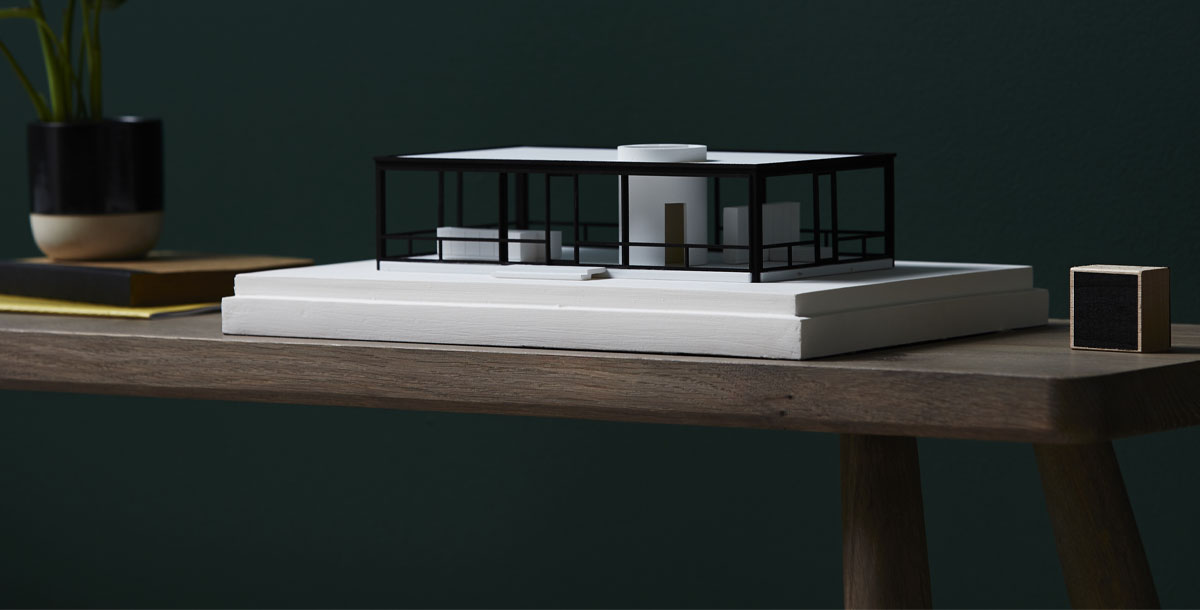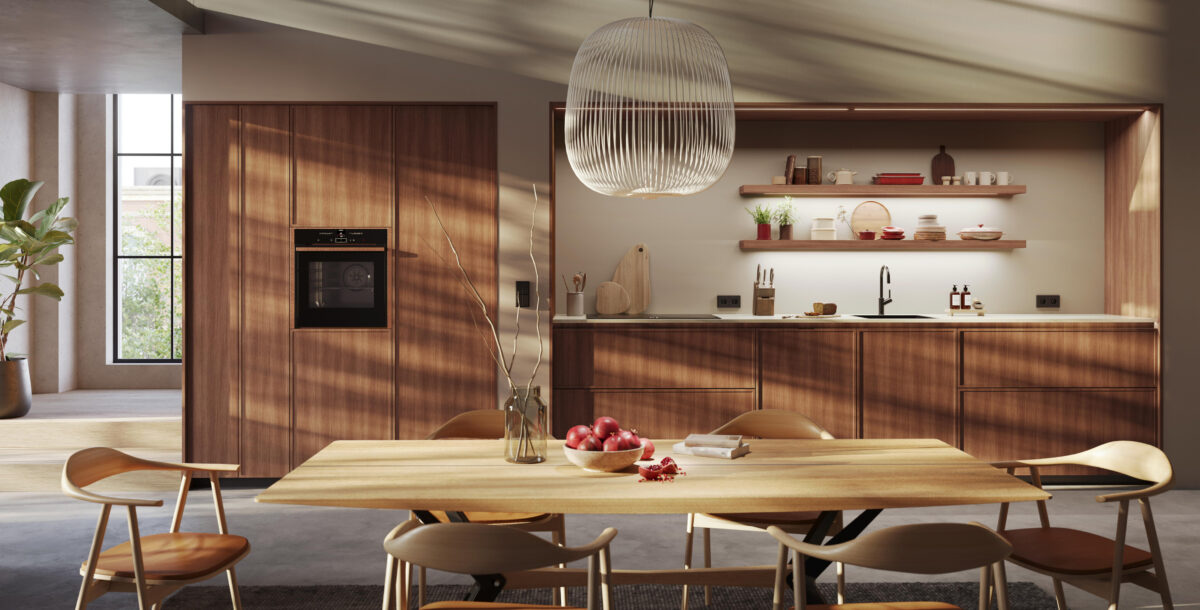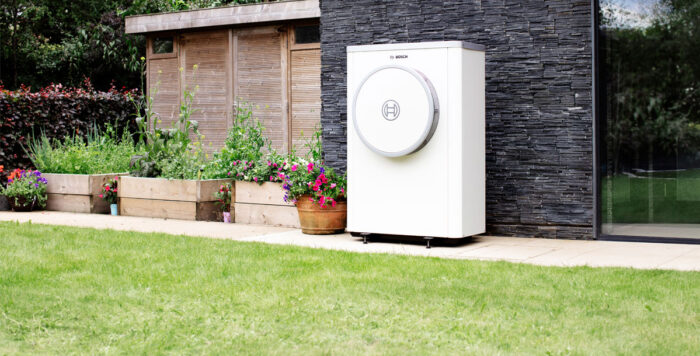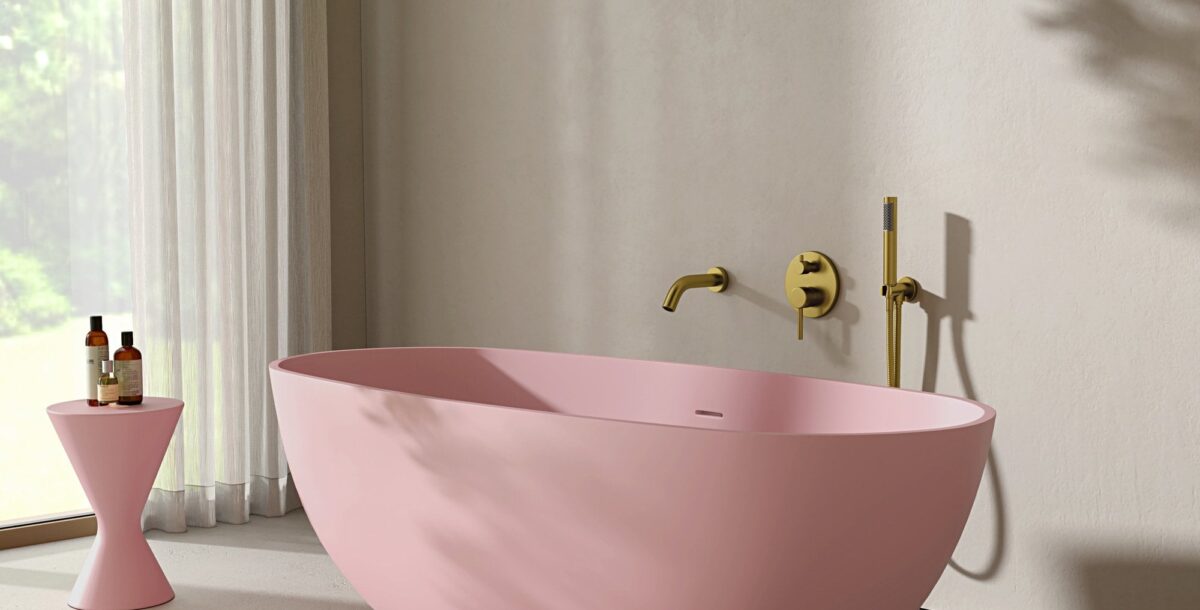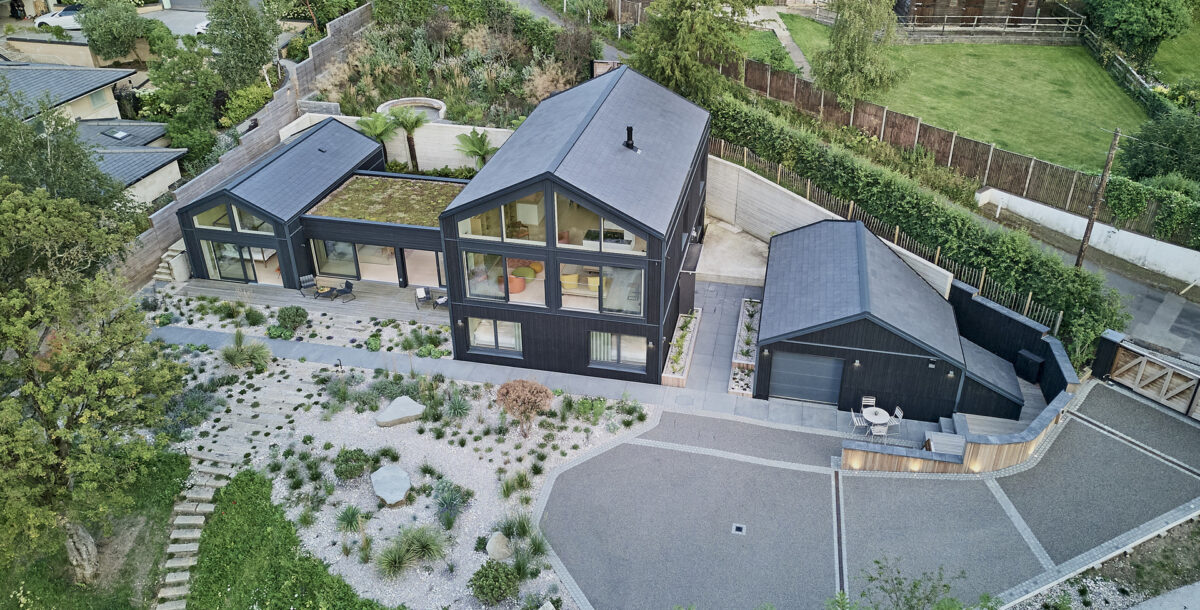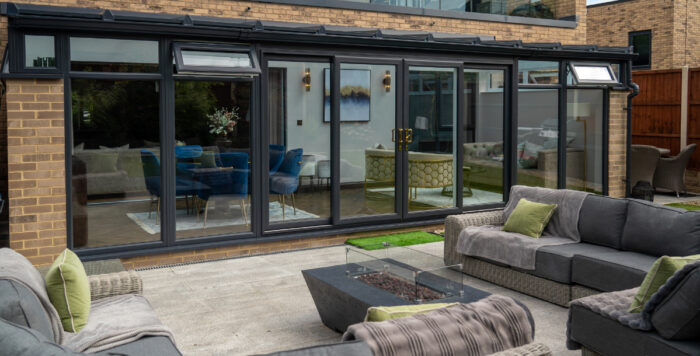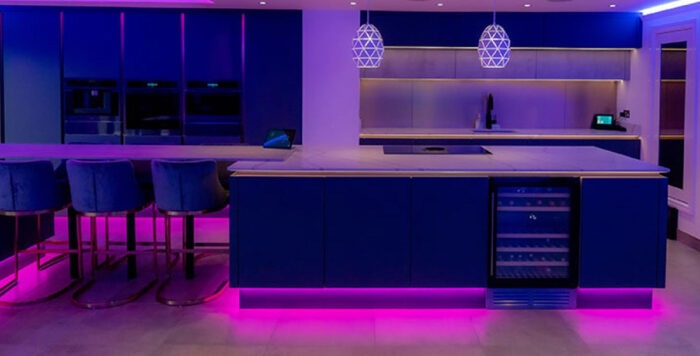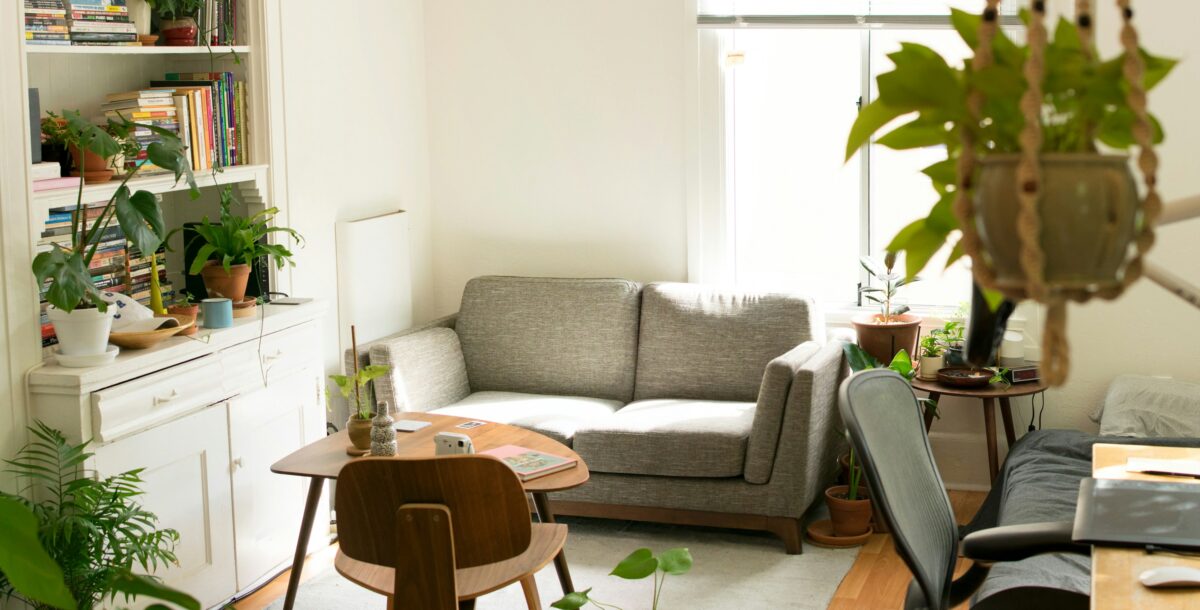Why architectural models are becoming more popular
It's easier than ever to commission a 3D model of your own home
Architectural models of private residences and public buildings, ubiquitous in design offices, are becoming more popular among homeowners. But why? Is it nostalgia for the Lego kits many of us used to build as kids? Or is it more than that?
‘The interest has always been there for collectors and makers,’ says Robert Paisley of Chisel & Mouse, a Sussex-based model building specialist. ‘But new fabrication techniques and a wider range of production materials have reduced the cost and increased the accuracy, robustness and tactility of architectural models.’
Robert founded Chisel & Mouse with his brother Gavin. The duo has been casting and handcrafting scale models of architectural landmarks and cityscapes since 2011, using a mixture of 3D design and printing techniques alongside the more traditional methods of moulding and casting.
As well as iconic buildings such as the modernist Bauhaus Dessau by Walter Gropius, the brutalist Trellick Tower by Erno Goldfinger, and the art nouveau Helsinki Central Station by Gottlieb Eliel Saarinen, they also offer a bespoke service for those who want to commission a model of their own Grand Designs house, or even a whole cityscape.
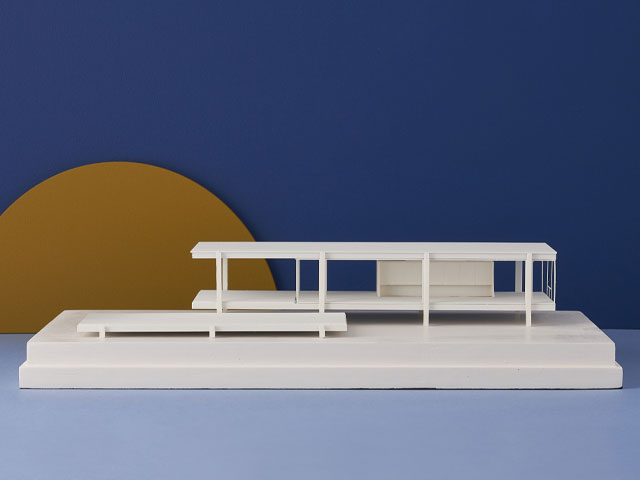
A Chisel & Mouse architectural model of the Edith Farnsworth House in Illinois, designed and constructed by Ludwig Mies van der Rohe between 1945 and 1951
A rise in interest in architectural models
Architectural scale models were primarily used for designers to see a 3D representation of and get a feel for how a design project will progress. Along with 3D renderings, building models are another stage of architectural design process that can inform how the project proceeds.
‘There does seem to be a real rise in interest in architectural models lately,’ says Ben Taggart of Model Houses, who has also noticed the increase in demand. ‘This year, despite the economic situation, has been my busiest ever,’ he adds.
Is there a typical customer for these architectural models? ‘My work has brought me together with many wonderful people,’ says Ben, ‘from the owners of grand houses with a passion for architecture, to those who live in more “ordinary” homes which mean the world to them.’
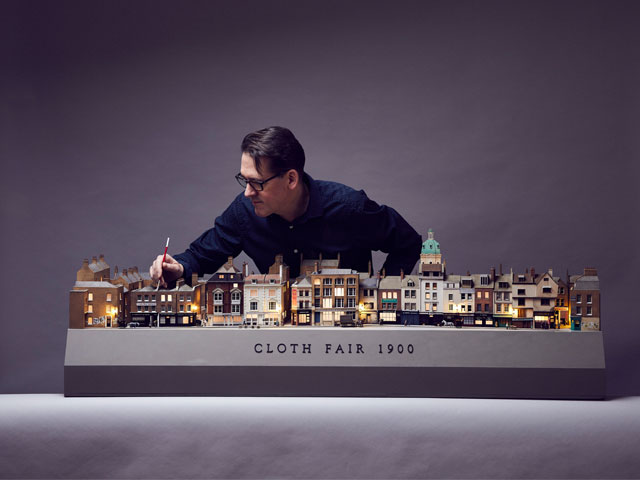
Ben Taggart of Model Houses recreating a street in the City of London. Photo: Alun Callender
Nostalgia
‘I often make models for clients who are moving house,’ said Ben. ‘Sometimes leaving can be a profoundly emotional experience. A lot of people burst into tears when they receive one of my model houses.
‘It’s striking that when the building is brought down to a miniature size, people see the beauty of the house more clearly,’ he adds. ‘It’s a strange reversal that the smaller I make the models, the more people notice about them.’
Nostalgia also seems to play a part in the demand for architectural models: ‘I once made a model of Rockingham Castle as it looked in the 13th Century,’ said Ben, ‘and in July I reconstructed a large 1930s house that was completely destroyed by fire.’
He has also been asked to make a model of a lost shop, which was demolished in the 1970s.
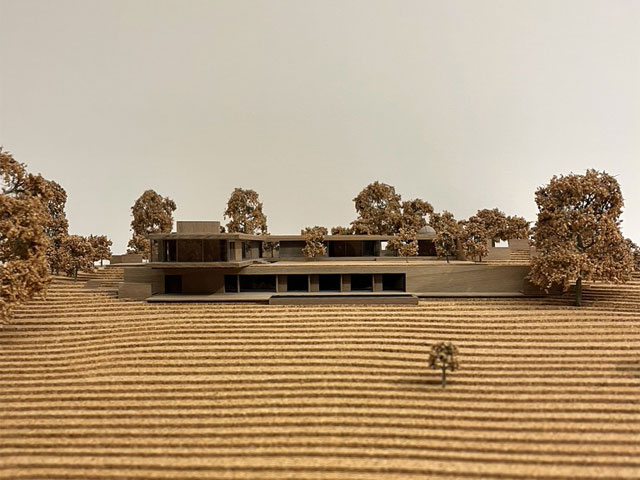
A model of Ström Architects’ rammed earth-walled house in East Sussex by Ward Lambert Architectural Models
A physical model to see and touch
‘Homes for private clients are a very intimate thing, and these projects reflect a more human, personal dynamic,’ said Matthew Ward-Lambert from Ward Lambert Architectural Models.
‘When designs take a long time to get from the architect’s head, through planning, technical design, tendering, construction, and finally to completion, a physical model that clients can see, and touch is very important to keep the sense of momentum and interest going.’
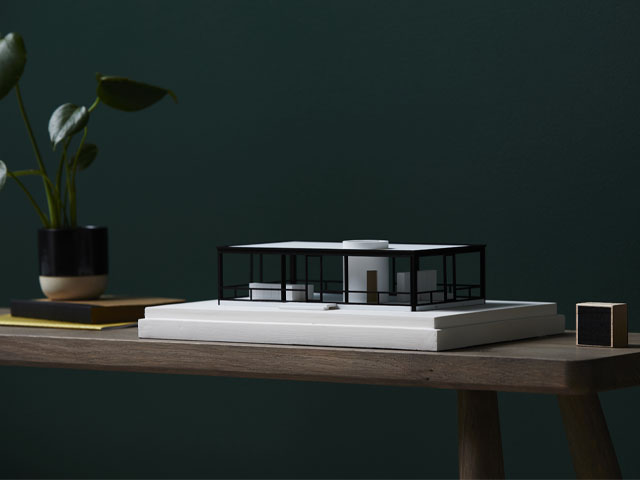
The Glass House by Philip Johnson, inspired by Mies Van Der Rohes’ Farnsworth House, created as a scale architectural model by Chisel & Mouse
Build your own
For those keen to try their hand at building an architectural model, there are plenty of self-assembly model kits online. Try Etsy, which offers a number of carboard and wooden kits. You can even commission a 3D-printed model of your own home. And of course there’s Lego, which offers Architecture and Icons ranges featuring challenging builds such as The White House and the Eiffel Tower.
Professional architectural model-making courses are also available. Model Shop lists a number of full and part-time professional courses, and RIBA occasionally offers model-making classes for adults and children.
Both the University for the Creative Arts in Canterbury and Arts University Bournemouth offer a full-time degree-course in modelmaking, while Central Saint Martins in London offers a short-course in modelmaking for architecture.

